St Pancras: Excavation sheds new light on notorious workhouse
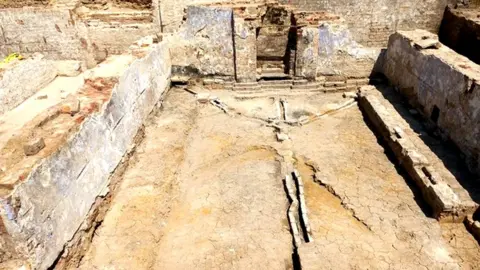 Mola
MolaA 200-year-old London workhouse thought to have inspired Charles Dickens may not have started out as inhospitable as its reputation suggests.
Archaeologists from the Museum of London Archaeology (MOLA) say they have uncovered unusual details while excavating St Pancras Workhouse.
They found brightly coloured walls, fireplaces and branded crockery.
MOLA says the site may have started out with a greater focus on support rather than deterrence.
Workhouses were established to support the poor by providing food and basic shelter but also served as a way of deterring people from taking advantage of the state, by making residents do repetitive tasks or hard labour.
Inspiration for Oliver Twist
Most were widely known to be inhospitable and harsh environments but the finds suggest residents of the St Pancras Workhouse may have had a slightly more hospitable experience, at least in its early iteration.
MOLA said the link between Oliver Twist and St Pancras Workhouse comes from the possibility that Charles Dickens based the titular character on Robert Blincoe, an inmate of St Pancras Workhouse whose story became relatively well known in the 1830s.
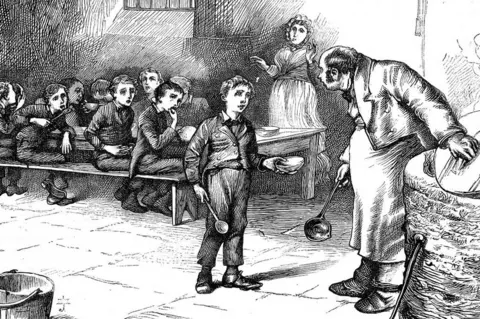 Universal History Archive/Getty Images
Universal History Archive/Getty ImagesThe workhouse was originally built at the site in 1809, and included gardens, infirmaries and a nursery.
It expanded several times to deal with severe overcrowding, with historical records recording multiple sick wards, difficult conditions and hard labour at the site by the late 1800s.
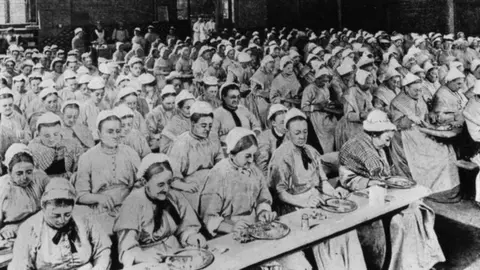 Getty Images
Getty Images'Extraordinary, vivid picture'
MOLA said the team focused on excavating areas of the site where workhouse buildings were demolished after being bombed during World War Two.
It said one area, believed to be the original female wards, was extremely well-preserved, with walls "found standing up to a metre high, coated in vibrant blue painted plaster - conjuring up a very different picture compared with the dark, dingy workhouses often depicted in popular culture".
It added the presence of fireplaces suggested thought had been given to the comfort of the people living there.
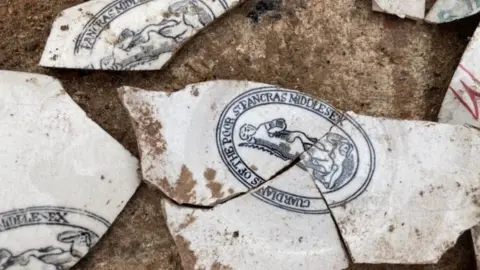 Mola
MolaThe excavations also uncovered items used in the workhouse including "a large amount of institutional crockery" branded with an image of St Pancras and the words "Guardians of the poor St Pancras Middlesex".
Gwilym Williams, project manager at MOLA, said the survival of such details was "extraordinary", adding: "Previously, little was known about this building other than its shape marked on parish maps.
"These discoveries allow us to get a vivid picture of life in early 19th century workhouses."
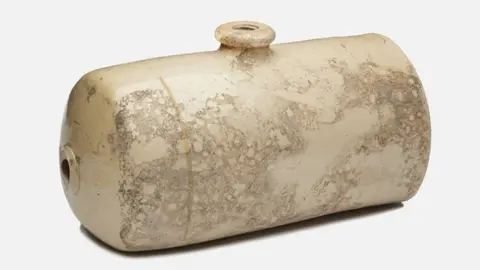 Mola
MolaArchaeologists also found the remains of a bone toothbrush with horsehair bristles - showing personal hygiene remained important.
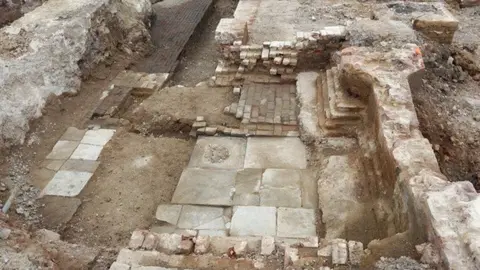 Mola
MolaThe excavations were being carried out as part of plans to build a new eye care centre on the site.
The new centre - called Oriel - is a joint initiative between Moorfields Eye Hospital NHS Foundation Trust and University College London. It is due to open in 2027.

Listen to the best of BBC Radio London on Sounds and follow BBC London on Facebook, X and Instagram. Send your story ideas to [email protected]
